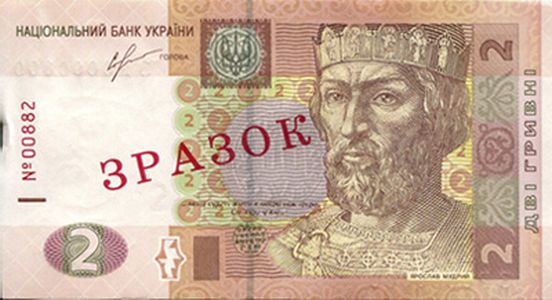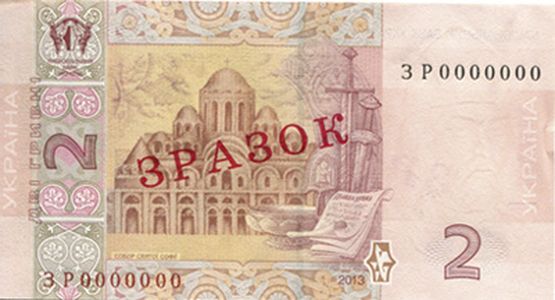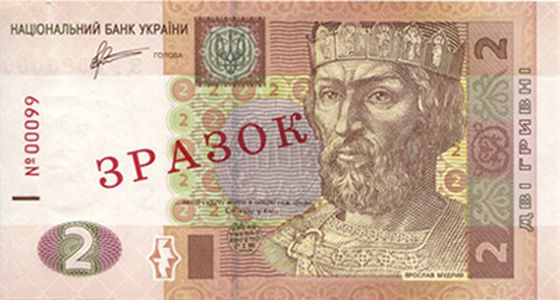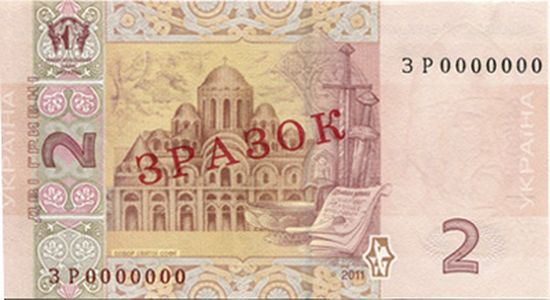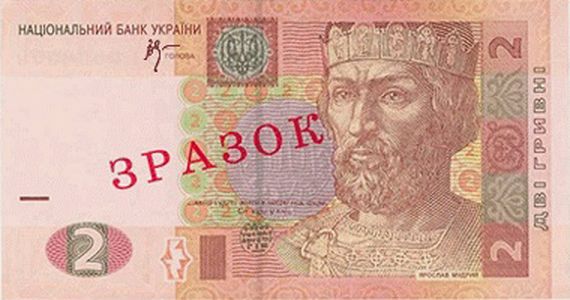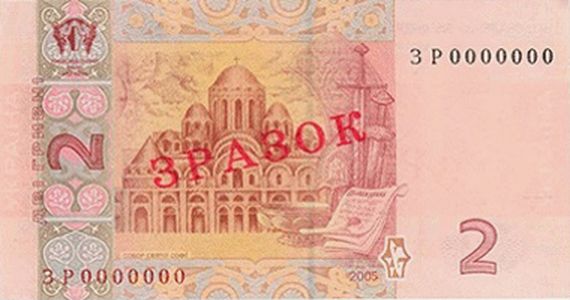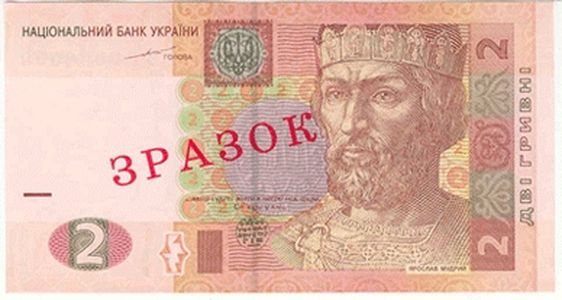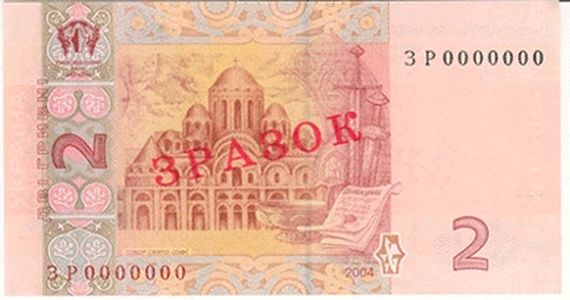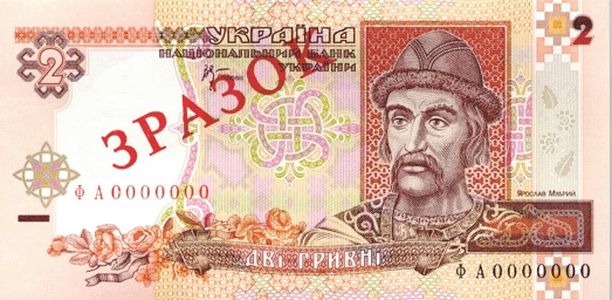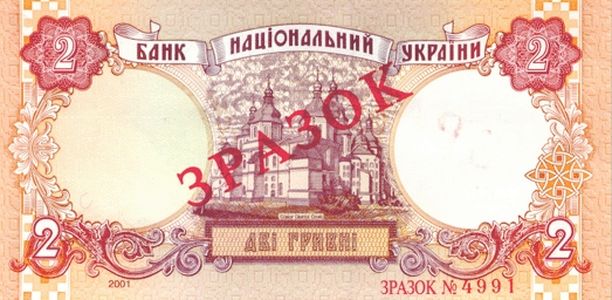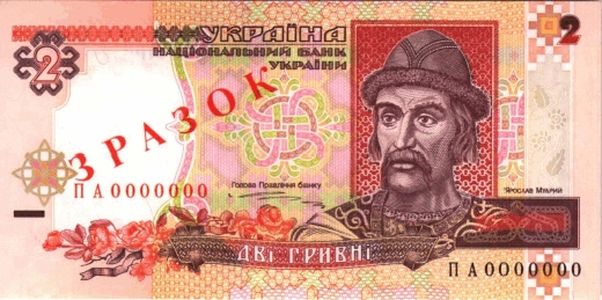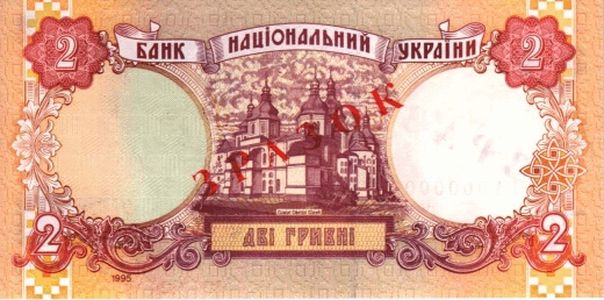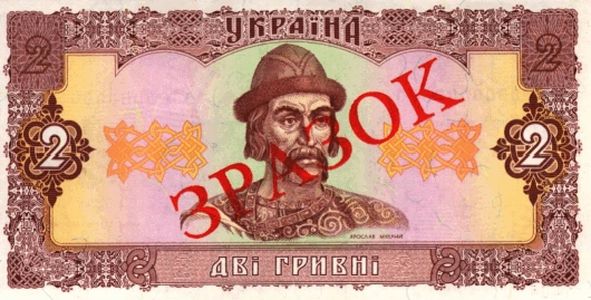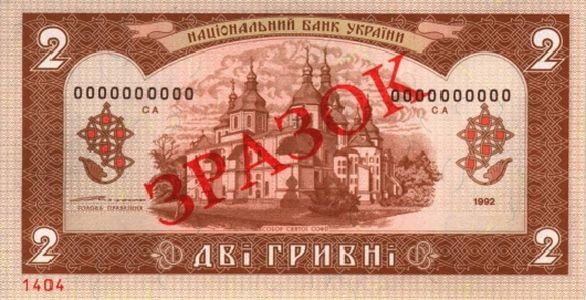The face side of the new banknote as well the face of the previous 2 hryvnia banknotes has the portrait of Yaroslav the Wise, and the back depicts the Cathedral of St. Sophia.
Yaroslav the Wise was a Grand Duke of Kyiv (1019-1054). In times of his ruling the “Russian Justice” Code of the Old Rus was composed and adopted, the Christianity was finally established in Rus and the culture developed. Yaroslav the Wise was buried in the Cathedral of St. Sophia in Kyiv.
The Cathedral of St. Sophia in Kyiv is a historical, architectural and wall painting monument of the first half of the XI century, which is famous worldwide. It was built in the golden age of Kyivan Rus to become the metropolitan`s cathedral, i.e. the principal church of Rus, on the place, where Yaroslav had won a victory over Pechenegs. Yaroslav founded therein the first library in Rus.
Security elements
The banknote is printed on the tinted paper of brown color which is the dominating color of the design of the banknote.
Banknote size (63x118) mm.
1. Watermark
A multi-tone portrait, formed by the internal structure of paper, has a fixed position on the banknote and becomes visible when the banknote is held up to the light. Repeats the portrait printed on the face of the note.
1a. Light Watermark Element
Imprint of the numerical indication of the denomination is visible when looking at the banknote against the light.
2. Coded Security Thread
A fully embedded into the paper polymer coded thread with the following transparent direct and inversed images: “2 ГРН”, a trident and the underlined denomination “2”. The parts of the thread glowing in green-yellow and blue colors under the UV light.
3. Latent (Hidden) Image
A numerical indication of the denomination becomes visible when the banknote is tilted at a sharp angle to the light.
4. Relief Images
Graphic elements on the face of the banknote are printed in special printing when the ink is raised above the paper surface and can be felt by touch: a) the sign for the blind; b) the portrait; c) inscriptions; d) IZARD; e) numerical indication of the denomination.
5. See -Through Element
Printed elements on the face and on the back of the banknote which complement each other and form the letter “Y” when the note is held up to the light.
6. "Orloff" Printing
A special type of printing which forms a pattern with the ink of different colors ensuring an abrupt change of one color into another without intermittence and displacement of graphic elements of the pattern (lines, planes).
7. Microtext
Repeated inscriptions which can be read with magnifying glass.
8. Rainbow Printing
Special type of printing ensuring a smooth change of one color into another without intermittence and displacement of graphic elements of the pattern.
9. Serial Number
The serial numbers is printed in high printing:
1) with black inks having magnetic properties;
2) with red inks glowing under the UV light in yellow-red color.
10. Antiscanning Grid
Thin lines placed at different angles which form a moire pattern when copied or scanned.
11. Security Fibers
Chaotically embedded into the paper invisible security fibers glowing in red and green colors under the UV light.









